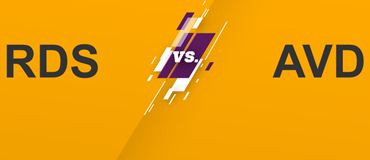In our move toward a more connected world, data is becoming more important in our everyday lives. We rely on systems to interact with the world in every way, including going as far as to wear devices that record our every movement.
From an organisational perspective, there has been an explosion of data available covering every process. Traditionally, organisations focus on financial and operational data, but there are now multiple data sources from marketing, social media activities, and even devices from the Internet of Things (IoT).
The critical question for any organisation is:
Does your DATA enable you to make INFORMED business decisions QUICKLY?
Data has an opportunity cost. If you're not investing into systems that enable you to quickly find insights, opportunities for profit or efficiencies are lost. Organisations often start with the simple spreadsheet, but as the organisation grows, the compounding effort required to continue this style of reporting is significant and inefficient.
If you can empathise with the pain from spreadsheet-style reporting, read on as we outline five reasons why your organisation should make the move to modern data analytics.
What is "Modern Data Analytics"?
We define this term as a suite of tools that enable the step-by-step process of extracting and transforming raw data to visualise and gain insights. Depending upon the type and size of an organisation, this could describe a single tool or collection of multiple specialist tools. Furthermore, the use of "modern" describes a cloud-based or hybrid solution over more traditional on-premises solutions.
Five reasons to move to modern data analytics:
Insights and self-service analytics
The latest generation of analytics visualisation tools have introduced users to graphically rich and interactive visuals that allow intuitive data analysis to quickly surface business insights. These tools allow users to filter. drill down, and drill through to detail, and then easily share and collaborate these insights with other users. The data is automatically refreshed and transformed ready for analysis, anywhere from your desk to your phone. Furthermore, these tools have advanced analytics use cases for machine learning, data science, and IoT.
Scalable and cost effective
Traditional analytics solutions have had high barriers to entry from both a software licensing and an infrastructure cost perspective. Modern analytics tools have evolved to become highly scalable in both cost and workload. Essentially, you can start creating an analytics solution at no cost and as the number of users and the workloads increase, both subscription licensing and consumption costs scale.
Cloud ready
At Professional Advantage, we are seeing a movement toward cloud-based applications. Not only are modern analytics solutions hosted or developed in the cloud, they can readily connect to multiple cloud sources and on-premises systems. There is also increasing integration between analytics software and office style productivity and collaboration solutions.
Data integrity
Modern analytics tools address the data integrity pain points that growing organisations face. Issues with multiple data sources, large data volumes, and data quality and complexity are addressed in the data transformation process and data access with these tools.
Data governance
Given the increasing accessibility of organisation data and ongoing security threats in the online world, an organisation will want to standardise and unify the governance of their data. Data governance within modern analytics tools enables a single source of truth, availability, and granular accessibility to users, with dedicated security and privacy features.
There are a number of compelling reasons for organisations to move to modern analytics. These solutions enable data driven insights for more effective and quicker decisions and have removed the traditional high barriers to entry by enabling scalable costs through cloud applications. These tools also enable data integrity, governance, and security for growing organisations.
Next Article:
For the next blog in the series, we will be discussing the different data maturity levels of an organisation and how to move from one level to the next.
Read this blog:
Moving through the Data Maturity Model






